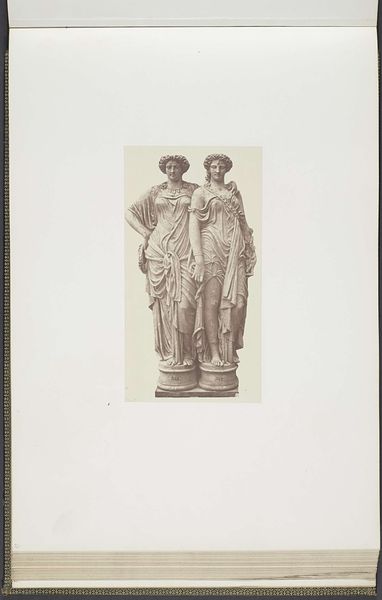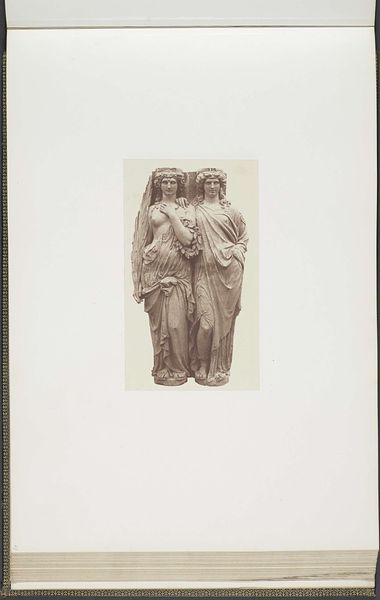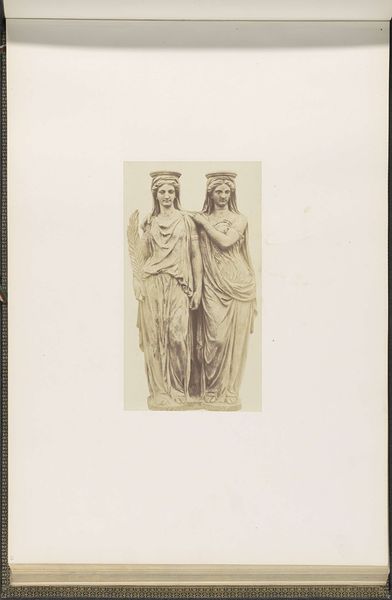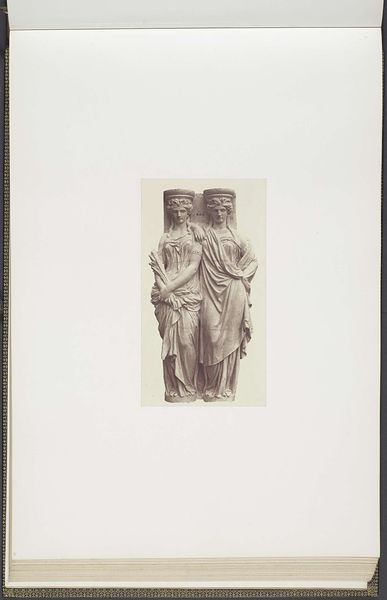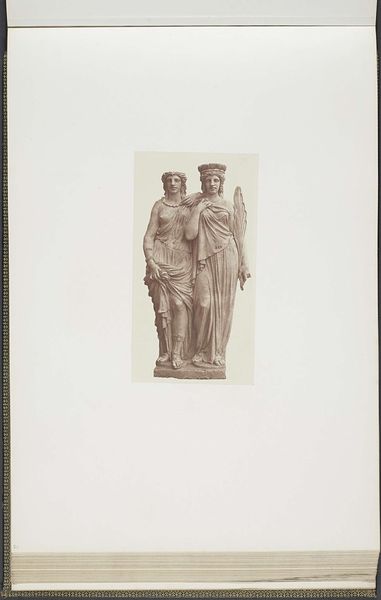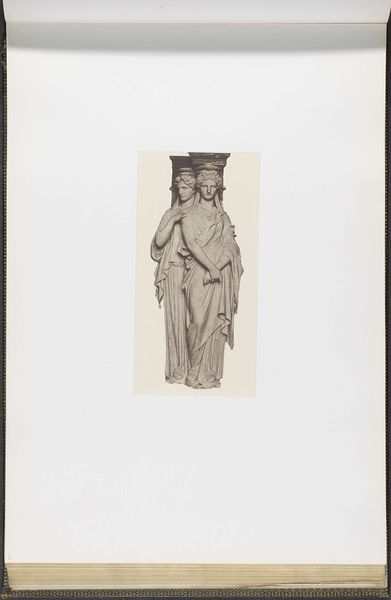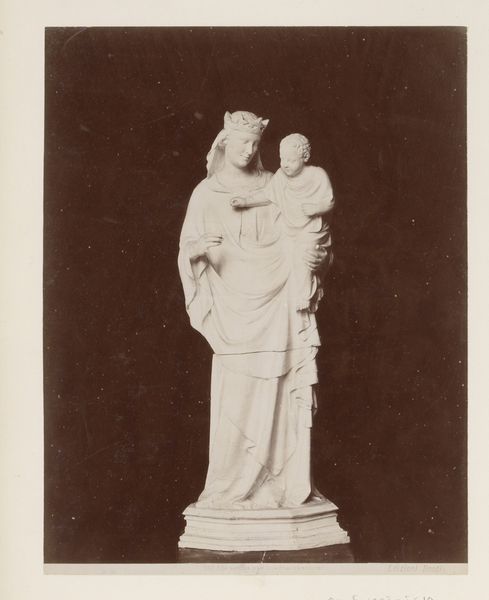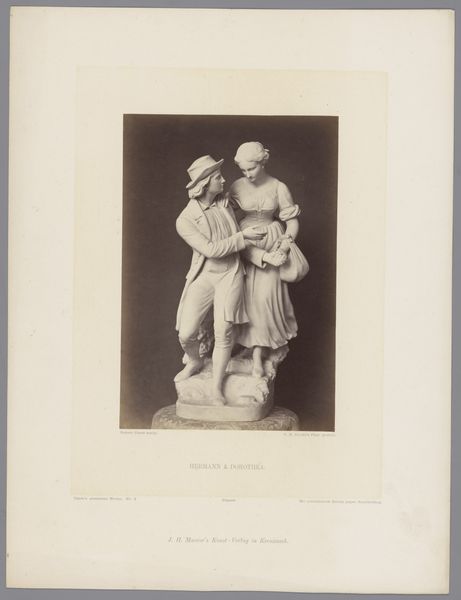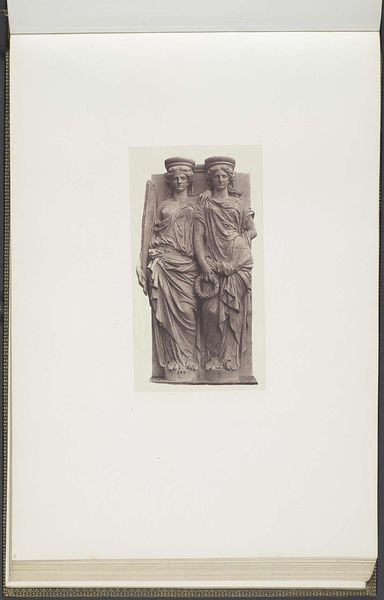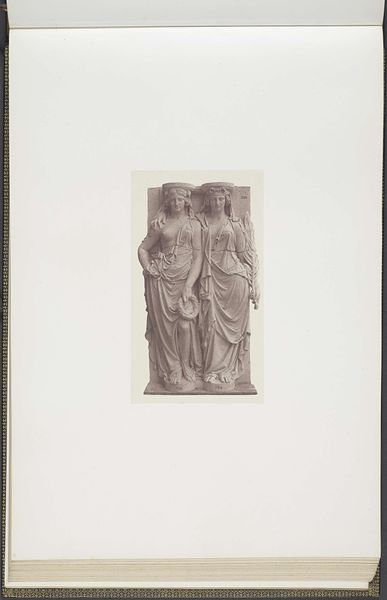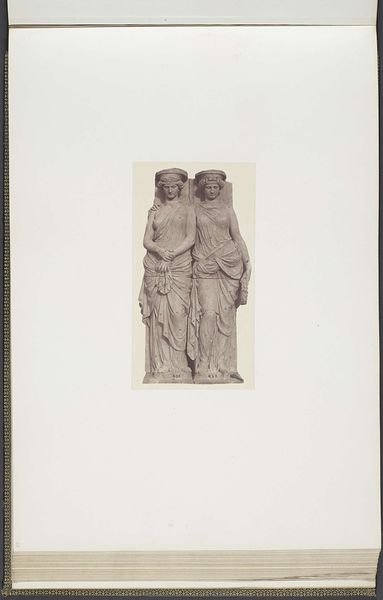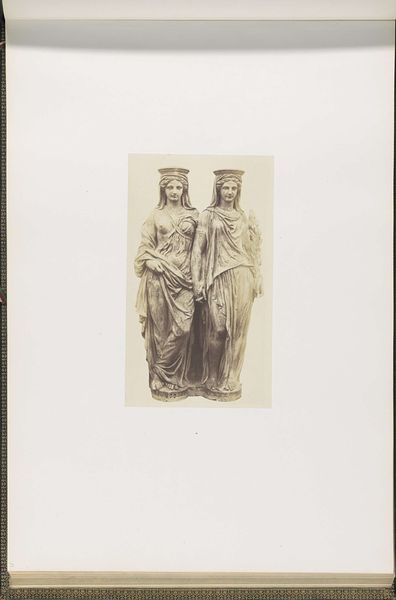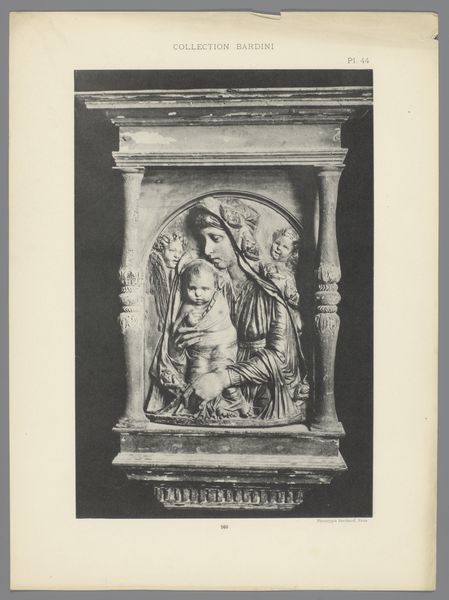
Gipsmodellen voor kariatiden op het Palais du Louvre door Francisque Duret c. 1855 - 1857
0:00
0:00
carving, print, photography, sculpture
#
portrait
#
carving
# print
#
classical-realism
#
photography
#
sculpture
Dimensions: height 382 mm, width 560 mm
Copyright: Rijks Museum: Open Domain
Curator: Here at the Rijksmuseum, we have a fascinating image: Edouard Baldus' photograph "Gipsmodellen voor kariatiden op het Palais du Louvre door Francisque Duret," capturing the plaster models of the caryatids for the Louvre palace, around 1855 to 1857. Editor: It strikes me as stoic, almost melancholy. The soft sepia tones and the rigid, symmetrical pose of the figures create this atmosphere of restrained power. Curator: Indeed. What I find particularly compelling is Baldus’ documentation of these models, intermediates to the final architectural elements. The photo mediates the making; we consider the plaster, a utilitarian material, temporarily embodying these classical forms, before they were carved into stone and placed at the Louvre. This represents labor, craft, and how the building’s physical components come into being. Editor: Absolutely, and it brings the question: What do caryatids represent? Bearing weight—literally architectural support. Spiritually, they signify women's strength and endurance. Their robes drape with classical modesty, referencing the enduring influence of ancient Greece, a golden age of artistic achievement and an imagined world of female virtues and support. Curator: Note that this is photography reproducing sculpture! Baldus is working in a period of massive transformation in building practices, where photography becomes a tool for architects and artists to document and disseminate their designs and projects. It almost democratizes the sculptural form. Editor: But consider the careful composition here! Even in a documentary photograph, the choice to isolate these figures elevates them. Baldus reframes the symbols; he presents them anew, inviting us to contemplate their layered significance through art and photography. Curator: It underscores the transition of sculptural labor in the 19th Century too. Where you have large-scale public works, like the Louvre, with individuals producing modules in temporary materials like plaster, that are then translated through different processes, into the permanent structures we recognize today. Editor: An apt observation; both the art and photograph remind us of both visible legacy, and invisible effort and symbology! Curator: A process frozen in time by Baldus, providing insight into a period of shifting manufacturing processes and technology. Editor: Indeed, it speaks of artistic choices that echo the test of time through symbol.
Comments
No comments
Be the first to comment and join the conversation on the ultimate creative platform.
